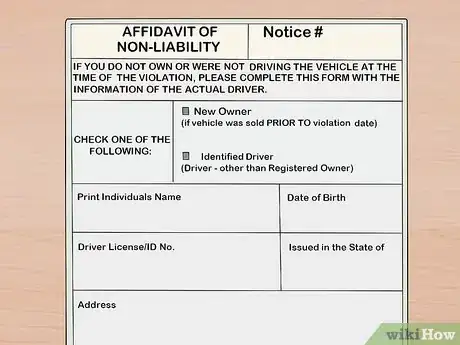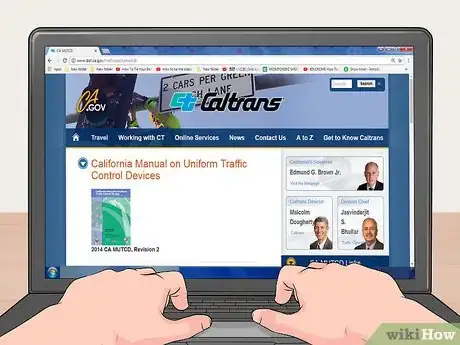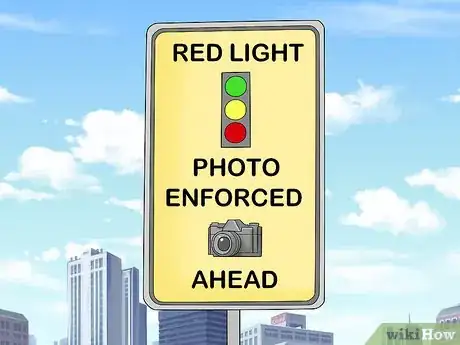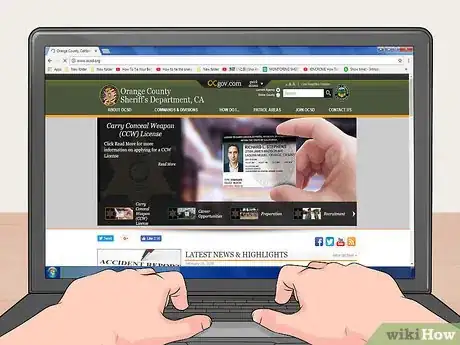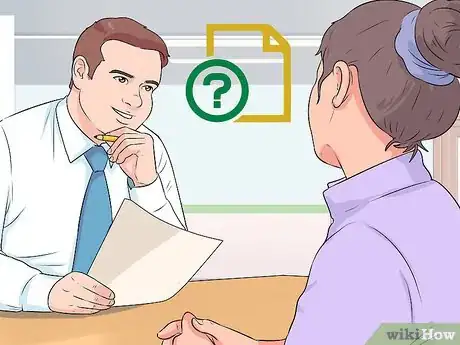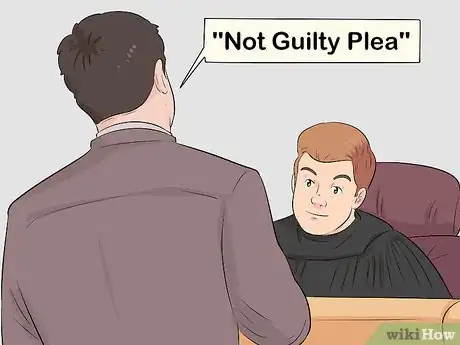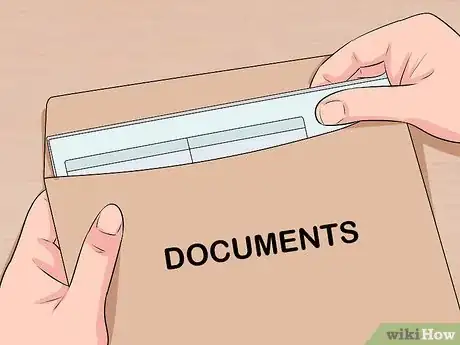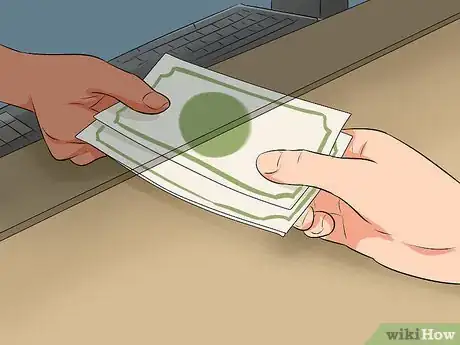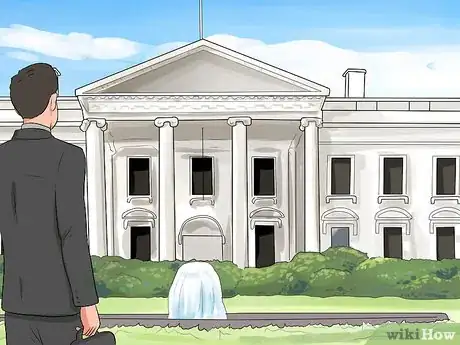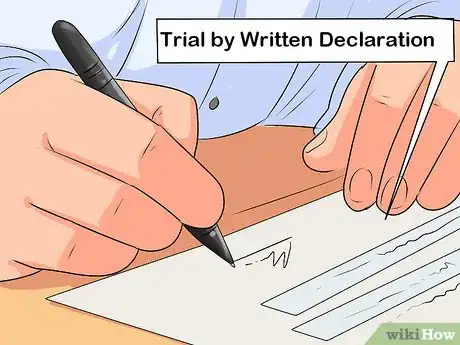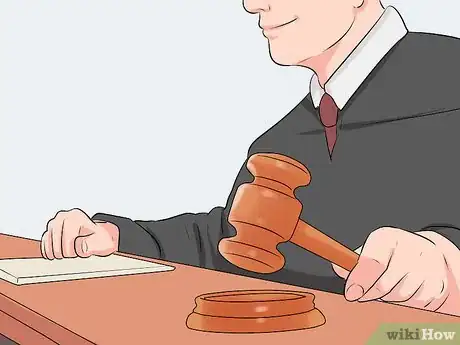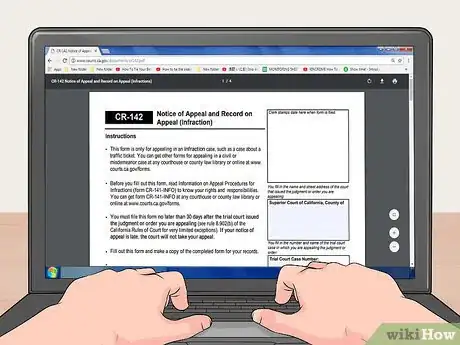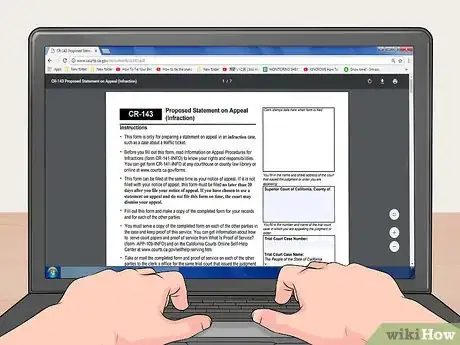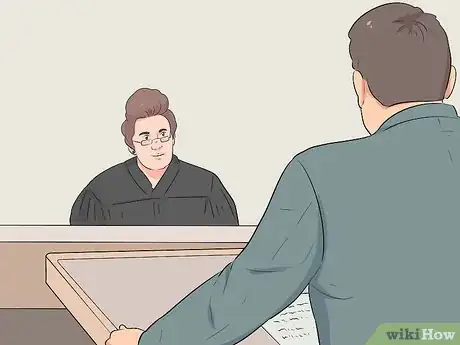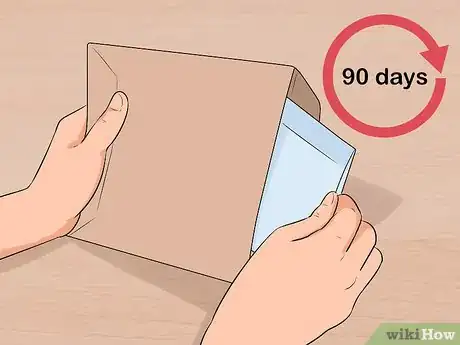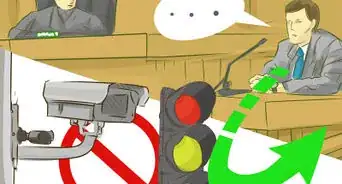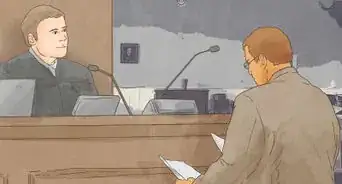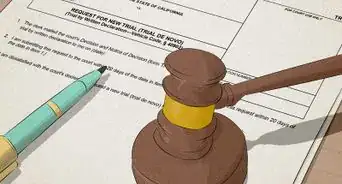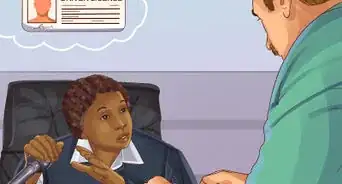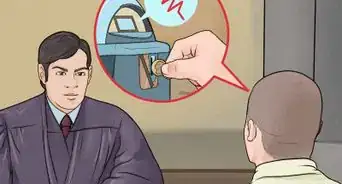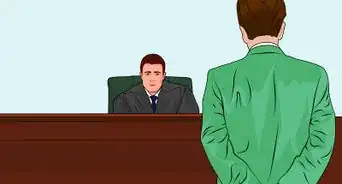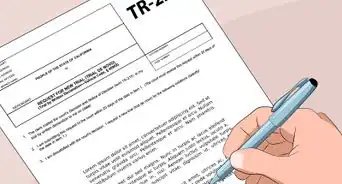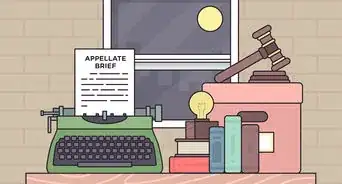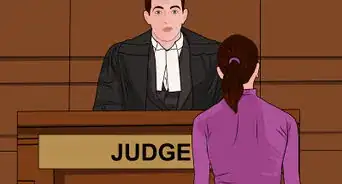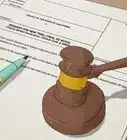This article was written by Jennifer Mueller, JD. Jennifer Mueller is an in-house legal expert at wikiHow. Jennifer reviews, fact-checks, and evaluates wikiHow's legal content to ensure thoroughness and accuracy. She received her JD from Indiana University Maurer School of Law in 2006.
There are 10 references cited in this article, which can be found at the bottom of the page.
This article has been viewed 107,325 times.
More than 40 cities and counties throughout California use red-light cameras as a traffic enforcement tool. If one of these cameras snaps your car running a red light, you'll receive a citation in the mail that can cost you about $500. It is possible to fight a red light ticket in California, although it may require a little time and effort on your part. If the trial judge doesn't decide in your favor and you still don't believe you should have to pay that hefty fine, you can also try to appeal.[1]
Steps
Building Your Defense
-
1Read the citation carefully. If your vehicle triggers a red-light camera, a citation will be mailed to your address within 15 days of the incident. This citation provides information about the incident as well as instructions on how to pay the fine or contest the ticket.[2]
- Check the date and time of the incident, and review your own schedule. This can help you place the incident and figure out if you were driving your car.
- Citations are sent to the registered owner of the car. However, if you weren't driving your car when it triggered the camera, you aren't responsible for paying the ticket.
-
2Request photographs or videos of the incident. The cameras produce photos of your license tag as you are passing through the intersection, and may also have video of your car passing through the intersection. Typically you can view these online.[3]
- Your citation will have information on what website to visit if you want to view the photos or videos of the incident.
- If the photos or videos aren't available online, you can request them from the law enforcement agency that issued your citation. The name and address of that agency will be listed on the citation.
Advertisement -
3Submit an affidavit if you weren't driving. Your citation includes an affidavit form you can use if you weren't driving your vehicle when the incident occurred. You must provide the name and address of the person who was driving so the citation can be sent to them instead.[4]
- You also must provide the driver's license number of the person who was driving. If you don't have this information, fill out as much as you can and leave the rest blank. The law enforcement agency will be able to look it up.
-
4Time the yellow light interval. California law requires lights to stay yellow for a specified period of time before the light turns red. If you recall the yellow light being unusually short, you can return to the intersection and time it yourself.[5]
- Take a stop watch and time several cycles, then average the result you get. Compare your result to the required time listed in the California Manual on Uniform Traffic Control Devices. You can download a copy of that manual at http://www.dot.ca.gov/trafficops/camutcd/.
- If the yellow light interval is shorter than the minimum required time, you have a defense against your red light ticket.
-
5Check for warning signs. While you're at the intersection where the incident occurred, make sure there is a warning sign posted within 200 feet of the intersection. This sign should be visible to oncoming traffic, and clearly state that an automatic enforcement system is being used.[6]
- If there are not any warning signs, or if the warning signs aren't clearly visible, you may have a defense against your red light ticket. For example, the sign may have fallen down, or may be obscured by a tree branch.
-
6Visit the city or county law enforcement website. Many law enforcement agencies provide information on the maintenance of their automatic enforcement systems to the public on their websites. You might also find information about the locations of the red light cameras and the official timing for the yellow light intervals.
- If this information is available, you can use it as a starting point. However, if you want to fight your red light ticket you should still go to the intersection and check the information for yourself. Things might have changed since those readings were taken.
-
7Request information on the maintenance of the system. California state law requires automatic enforcement systems to be calibrated and inspected regularly. If this information is not available online, you can request it directly from the department.[7]
- Law enforcement agencies are required to provide this information to the public if it is requested. If you run into any problems, you may want to consult a traffic attorney. They can help you get the information you need.
Contesting the Violation
-
1Enter a plea of "not guilty" at arraignment. Your citation will have a date listed on it for you to appear in court. This date is your arraignment. You must appear at the courthouse listed and enter your plea of "not guilty" at that time if you want to fight the ticket.[8]
- Some cities and counties may also allow you to enter a "not guilty" plea online. Others only allow you to pay the fine online – if you want to fight the ticket, you have to appear in court.
- If you need an interpreter at the trial, request one at your arraignment.
-
2Organize your documents and evidence for trial. At your trial, you'll be able to tell the judge why you shouldn't have to pay your red light ticket. You can introduce physical evidence, and even call witnesses.[9]
- For example, suppose you are arguing that the yellow light was too short. If you had a passenger in the car with you and they recall the yellow light being short, you might bring them with you to testify on your behalf.
- If you're citing any laws or regulations, bring copies of them with you. For example, if your argument is based on the yellow light interval, you should bring a copy of the relevant portion of the California Manual on Uniform Traffic Control Devices.
-
3Pay your deposit. In some counties, you may be required to make a deposit with the court in the amount of your bail for the citation. The deposit will never be more than the amount of your bail. If you are found not guilty, your deposit will be returned.[10]
- Contact the court ahead of time to find out what methods of payment are accepted. Generally, you can pay with a certified check or money order. Most courts don't take personal checks, and some may not take credit or debit cards.
-
4Appear in court for your trial. When you plead not guilty, your case will be set for trial. Arrive at the courthouse at least a half hour early. This will give you time to go through security and find the right court room.[11]
- Treat the occasion seriously. Keep your documents and evidence neat, and dress as though you are going to a job interview or attending a religious service.
- Take a seat in the gallery, as traffic courts typically hear many cases in one session. You can move to the front of the courtroom when your name is called.
-
5Present your case in court. Once your name is called, the judge will give you an opportunity to explain why you shouldn't have to pay the fine for the red light ticket. Speak loudly and clearly, and tell your story in a logical, coherent manner.[12]
- Stick to the facts, and avoid any emotional pleas. The judge has likely heard them all, and it won't help you – it might even work against you.
- Treat the judge with respect, and refer to them as "your honor." Using "sir" or "ma'am" may also be appropriate.
- Never interrupt the judge. If they start talking, stop and wait until they're finished. If they ask you a question, it's polite to ask if you can continue before you start your presentation again.
-
6Request a trial by written declaration if you don't want to go to court. In some cities and counties you may have the option of doing a trial by written declaration rather than appearing in court. This may be a better option for you if you get nervous or flustered speaking in public.
- If you use the trial by written declaration procedure, you may be required to pay the full bail amount when you submit your declaration. It will be refunded if the judge rules in your favor.
-
7Receive the court's decision. After you're done presenting your case, the judge will decide whether you are guilty or not guilty. If the judge decides you are guilty, typically you must be prepared to pay the fine immediately.[13]
- If you plan to appeal the judge's decision, you can ask for a stay of judgment pending appeal. This means you don't have to pay the fine until after the appeals court hears your case. However, the judge may decline your request.[14]
- If you had a trial by written declaration, you can request a new trial in court if you are dissatisfied with the judge's decision. You must make this request within 20 days of the date on the judgment.
Appealing an Unfavorable Decision
-
1Consult an attorney. It isn't necessary to have an attorney to file an appeal. However, if you've gotten to this point and you still want to fight your red light ticket, it may be worth it to have an attorney on your side. Your conviction will only be overturned if the judge made a legal error in your case. If you aren't extremely familiar with the law, this can get complicated.[15]
- Look for an attorney who specializes in traffic law. Preferably, you want someone who has experience getting red light ticket convictions overturned.
- Most attorneys offer a free initial consultation. Use that opportunity to interview 2 or 3 different attorneys so you can choose the best one to represent you.
-
2File your notice of appeal. The notice of appeal is a court document you must file to initiate the appeals process. It must be filed no later than 30 days after the judge hands down the decision in your case.[16]
- There is no fee to file a notice of appeal. If you are representing yourself or have not yet hired an attorney before the deadline, you can download a form to use at http://www.courts.ca.gov/documents/cr142.pdf.
-
3Request a record of the oral proceedings. In some situations you'll need to send a record of the oral proceedings up to the appeals court. If you're not sure, go ahead and request it to err on the side of caution.[17]
- For example, you may be arguing that there was insufficient evidence to convict you of the infraction. This is a common reason red light ticket convictions are appealed. In that case you do need a record of the oral proceedings, so the appeals court can evaluate the evidence presented.
-
4Prepare your proposed statement on appeal. This court document must be completed and filed with the court within 20 days after you file your notice. It tells the court why you are filing your appeal and how you think the appeals court should rule.[18]
- If you're representing yourself, you can download a copy of a form to use at http://www.courts.ca.gov/documents/cr143.pdf.
-
5File and serve your statement on appeal. When you've completed your statement, you must file it with the clerk of the court and have the prosecutor in your case served. If you don't know the name of the prosecutor, it may be listed on the judge's decision.[19]
- To have the prosecutor served, you typically want to send a file-stamped copy of your statement using certified mail with return receipt requested.
- When you get the green card back, that serves as your proof of service. You'll need to fill out a proof of service form to file with the court.
-
6Present your oral argument. If you've requested oral argument, you must appear in court before the appeals court judge and explain the legal errors that require your conviction to be overturned. You can waive oral argument if you prefer, and the judge will make their decision based on the statements you and the prosecutor filed with the court.[20]
- Both you and the prosecutor must waive oral argument. Typically, if you waive oral argument the prosecutor will not insist on it.
- Make sure the fact that you want to waive oral argument is included on your statement of appeal.
-
7Receive the appellate court's decision. After the date set for oral argument, the judge has 90 days to enter a written decision in your case. This date remains the same regardless of whether you've waived oral argument.[21]
- The appeals court clerk will mail you a copy of the written decision when it is entered. You may also be notified by phone.
References
- ↑ https://www.ocregister.com/2016/07/06/could-1000-traffic-tickets-be-tossed-out-because-of-red-light-camera-error/
- ↑ https://www.saccourt.ca.gov/traffic/citations-red-light-camera.aspx
- ↑ https://www.saccourt.ca.gov/traffic/citations-red-light-camera.aspx
- ↑ https://www.sacsheriff.com/pages/organization/traffic/redlight.aspx
- ↑ http://leginfo.legislature.ca.gov/faces/codes_displaySection.xhtml?lawCode=VEH§ionNum=21455.7.
- ↑ http://leginfo.legislature.ca.gov/faces/codes_displaySection.xhtml?lawCode=VEH§ionNum=21455.5.
- ↑ http://leginfo.legislature.ca.gov/faces/codes_displaySection.xhtml?lawCode=VEH§ionNum=21455.5.
- ↑ http://www.sfsuperiorcourt.org/divisions/traffic/contesting-citation
- ↑ http://www.sfsuperiorcourt.org/divisions/traffic/contesting-citation
- ↑ http://www.alameda.courts.ca.gov/Pages.aspx/How-do-I-prepare-for-Court-
- ↑ http://www.alameda.courts.ca.gov/Pages.aspx/How-do-I-prepare-for-Court-
- ↑ http://www.alameda.courts.ca.gov/Pages.aspx/How-do-I-prepare-for-Court-
- ↑ http://www.alameda.courts.ca.gov/Pages.aspx/How-do-I-prepare-for-Court-
- ↑ http://www.courts.ca.gov/documents/cr141info.pdf
- ↑ http://www.courts.ca.gov/documents/cr141info.pdf
- ↑ http://www.courts.ca.gov/11581.htm
- ↑ http://www.courts.ca.gov/documents/cr141info.pdf
- ↑ http://www.courts.ca.gov/11581.htm
- ↑ http://www.courts.ca.gov/11581.htm
- ↑ http://www.courts.ca.gov/11581.htm
- ↑ http://www.courts.ca.gov/11581.htm
- ↑ http://www.laweekly.com/news/yes-you-can-still-ignore-that-red-light-camera-ticket-4376619
About This Article
To fight a red light ticket in California, you’ll need to plead not guilty at your arraignment and provide evidence to support your case. Your ticket should include a link to a photo or video of you running the red light. If this isn’t available, you can request proof from the law enforcement agency that issued your ticket. If it wasn’t you driving the car, fill out the affidavit form that came with your ticket and provide details of the driver. If there was no warning sign within 200 feet of the photo enforced red light, you might be able to use this as a defense against your ticket. Or, if the yellow light interval is unusually short, this might also give you a valid defense. When you go to your arraignment, plead not guilty. Then, you’ll have to appear in court and present your case and evidence. For more tips from our Legal co-author, including how to appeal if you lose your fight against a red light ticket, read on.


